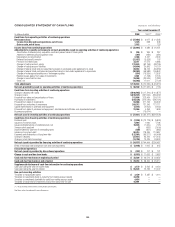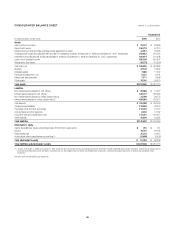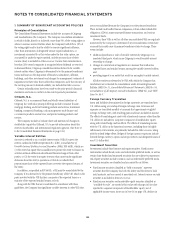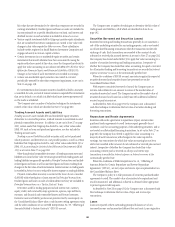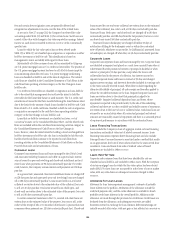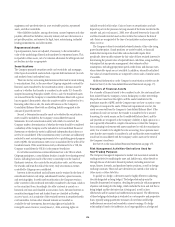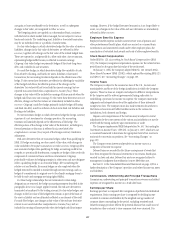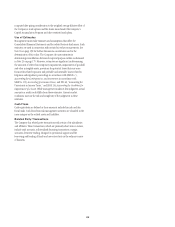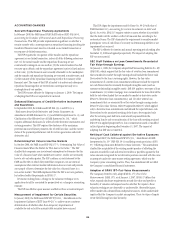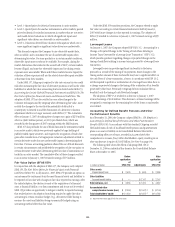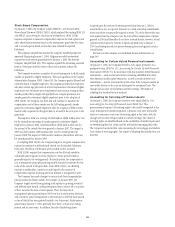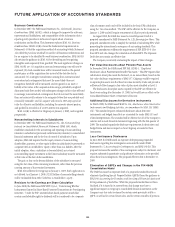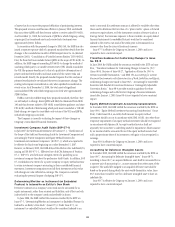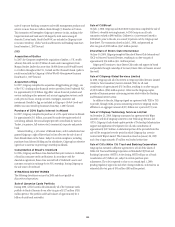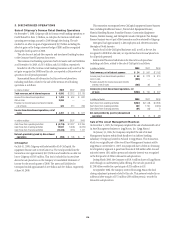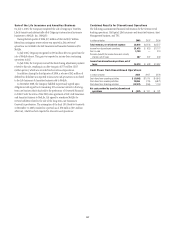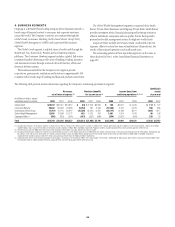Citibank 2008 Annual Report Download - page 136
Download and view the complete annual report
Please find page 136 of the 2008 Citibank annual report below. You can navigate through the pages in the report by either clicking on the pages listed below, or by using the keyword search tool below to find specific information within the annual report.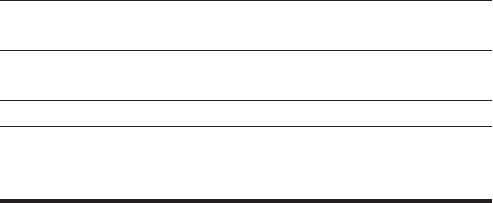
• Level 1–Quoted prices for identical instruments in active markets.
• Level 2–Quoted prices for similar instruments in active markets; quoted
prices for identical or similar instruments in markets that are not active;
and model derived valuations in which all significant inputs and
significant value drivers are observable in active markets.
• Level 3–Valuations derived from valuation techniques in which one or
more significant inputs or significant value drivers are unobservable.
This hierarchy requires the Company to use observable market data,
when available, and to minimize the use of unobservable inputs when
determining fair value. For some products or in certain market conditions,
observable inputs may not always be available. For example, during the
market dislocations that started in the second half of 2007, certain markets
became illiquid, and some key observable inputs used in valuing certain
exposures were unavailable. When and if these markets become liquid, the
valuation of these exposures will use the related observable inputs available
at that time from these markets.
Under SFAS 157, Citigroup is required to take into account its own credit
risk when measuring the fair value of derivative positions as well as the other
liabilities for which fair value accounting has been elected under SFAS 155,
Accounting for Certain Hybrid Financial Instruments and SFAS 159, The
Fair Value Option for Financial Assets and Financial Liabilities. The
adoption of SFAS 157 has also resulted in some other changes to the
valuation techniques used by Citigroup when determining fair value, most
notably the changes to the way that the probability of default of a
counterparty is factored in and the elimination of a derivative valuation
adjustment which is no longer necessary under SFAS 157. The cumulative
effect at January 1, 2007 of making these changes was a gain of $250 million
after-tax ($402 million pretax), or $0.05 per diluted share, which was
recorded in the first quarter of 2007 earnings within the S&B business.
SFAS 157 also precludes the use of block discounts for instruments traded
in an active market, which were previously applied to large holdings of
publicly traded equity securities, and requires the recognition of trade-date
gains after consideration of all appropriate valuation adjustments related to
certain derivative trades that use unobservable inputs in determining their
fair value. Previous accounting guidance allowed the use of block discounts
in certain circumstances and prohibited the recognition of day-one gains on
certain derivative trades when determining the fair value of instruments not
traded in an active market. The cumulative effect of these changes resulted
in an increase to January 1, 2007 retained earnings of $75 million.
Fair Value Option (SFAS 159)
In conjunction with the adoption of SFAS 157, the Company early-adopted
SFAS 159, The Fair Value Option for Financial Assets and Financial
Liabilities (SFAS 159), as of January 1, 2007. SFAS 159 provides an option on
an instrument-by-instrument basis for most financial assets and liabilities to
be reported at fair value with changes in fair value reported in earnings. After
the initial adoption, the election is made at the acquisition of a financial
asset, a financial liability, or a firm commitment and it may not be revoked.
SFAS 159 provides an opportunity to mitigate volatility in reported earnings
that resulted prior to its adoption from being required to apply fair value
accounting to certain economic hedges (e.g., derivatives) while having to
measure the assets and liabilities being economically hedged using an
accounting method other than fair value.
Under the SFAS 159 transition provisions, the Company elected to apply
fair value accounting to certain financial instruments held at January 1,
2007 with future changes in value reported in earnings. The adoption of
SFAS 159 resulted in a decrease to January 1, 2007 retained earnings of $99
million.
Leveraged Leases
On January 1, 2007, the Company adopted FSP FAS 13-2, “Accounting for a
Change or Projected Change in the Timing of Cash Flows Relating to
Income Taxes Generated by a Leverage Lease Transaction” (FSP 13-2),
which provides guidance regarding changes or projected changes in the
timing of cash flows relating to income taxes generated by a leveraged lease
transaction.
Leveraged leases can provide significant tax benefits to the lessor,
primarily as a result of the timing of tax payments. Since changes in the
timing and/or amount of these tax benefits may have a significant effect on
the cash flows of a lease transaction, a lessor, in accordance with FSP 13-2,
will be required to perform a recalculation of a leveraged lease when there is
a change or projected change in the timing of the realization of tax benefits
generated by that lease. Previously, Citigroup did not recalculate the tax
benefits if only the timing of cash flows had changed.
The adoption of FSP 13-2 resulted in a decrease to January 1, 2007
retained earnings of $148 million. This decrease to retained earnings will be
recognized in earnings over the remaining lives of the leases as tax benefits
are realized.
Accounting for Defined Benefit Pensions and Other
Postretirement Benefits
As of December 31, 2006, the Company adopted SFAS No. 158, Employer’s
Accounting for Defined Benefit Pensions and Other Postretirement
Benefits (SFAS 158). In accordance with this standard, Citigroup recorded
the funded status of each of its defined benefit pension and postretirement
plans as an asset or liability on its Consolidated Balance Sheet with a
corresponding offset, net of taxes, recorded in Accumulated other
comprehensive income (loss) within Stockholders’ equity, resulting in an
after-tax decrease in equity of $1.647 billion. See Note 9 on page 144.
The following table shows the effects of adopting SFAS 158 at
December 31, 2006 on individual line items in the Consolidated Balance
Sheet at December 31, 2006:
In millions of dollars
Before
application
of
SFAS 158 Adjustments
After
application
of
SFAS 158
Other assets
Prepaid benefit cost $ 2,620 $ (534) $ 2,086
Other liabilities
Accrued benefit liability $ — $ 2,147 $ 2,147
Deferred taxes, net $ 3,653 $ 1,034 $ 4,687
Accumulated other
comprehensive income (loss) $ (2,053) $(1,647) (1) $ (3,700)
Total stockholders’ equity $121,430 $(1,647) (1) $119,783
(1) Adjustment to initially apply SFAS 158, net of taxes.
130


